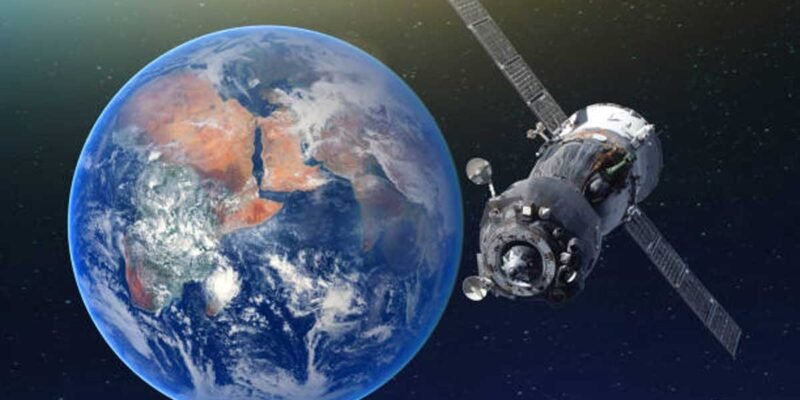Introduction to Sattelitter Technology
We live in a world where staying connected isn’t just convenient—it’s essential. Behind the scenes of our digital lives, there’s a fascinating technology quietly working above our heads: sattelitter systems. You might think of them as just another type of satellite, but that’s where things get interesting.
Unlike those old-school satellites that stay put in one spot, sattelitter represents something entirely different. These smart, adaptive networks can actually think and move, adjusting to what we need in real-time. It’s like having a personal assistant in space, but one that serves millions of people simultaneously.
What makes this technology so compelling is how it combines artificial intelligence with incredible flexibility. These systems don’t just sit there broadcasting signals—they actively optimize themselves, learn from patterns, and adapt to changing conditions. The result? A level of global connectivity that seemed impossible just a decade ago.
The Evolution from Traditional Satellites to Sattelitter Systems
Remember when getting internet in rural areas meant dealing with painfully slow connections? That frustration stems from limitations that have plagued satellite technology since Sputnik first beeped its way around Earth in 1957. Those early satellites were basically radio transmitters with wings—functional, but hardly intelligent.
The real game-changer came when engineers started thinking smaller and smarter. Instead of launching massive, expensive satellites that did one job, they began creating networks of smaller, interconnected units. Think of it like the difference between having one giant computer versus a network of smartphones—the latter is more flexible, resilient, and capable.
Today’s sattelitter systems operate much closer to Earth, typically in what we call Low Earth Orbit (LEO). This proximity makes a huge difference. While traditional satellites sitting 22,000 miles up might take half a second to respond to your request, sattelitter networks can cut that delay down to just a few milliseconds. That might not sound like much, but it’s the difference between a frustrating video call and a seamless conversation.
Core Features and Capabilities of Sattelitter Technology
Enhanced Mobility and Flexibility
Here’s where sattelitter technology gets really exciting. These systems can actually move around based on what’s happening on the ground. Imagine if your Wi-Fi router could physically relocate itself to wherever you needed the strongest signal—that’s essentially what sattelitter networks do on a global scale.
This flexibility becomes crucial during emergencies. When Hurricane Maria knocked out Puerto Rico’s communications in 2017, traditional satellites couldn’t do much more than maintain their fixed coverage patterns. Modern sattelitter systems, however, can literally redirect their resources to disaster zones, providing concentrated coverage exactly where it’s needed most.
AI-Driven Intelligence and Automation
The artificial intelligence built into sattelitter systems is genuinely impressive. Each satellite operates like a smart node in a vast network, making decisions about data routing, power management, and positioning without waiting for instructions from Earth. It’s like having thousands of tiny mission control centers working together in perfect harmony.
This intelligence extends to maintenance as well. These systems can predict when components might fail and automatically reroute traffic to prevent service interruptions. It’s the kind of proactive problem-solving that keeps your Netflix stream running smoothly, even when satellites are dealing with technical issues you’ll never know about.
Improved Resilience and Reliability
One of the most elegant aspects of sattelitter networks is how they handle failures. Traditional satellite systems have always suffered from a fundamental weakness: if something goes wrong with the satellite, you’re out of luck until it’s fixed or replaced. Sattelitter networks solve this by spreading the workload across many smaller units.
When one satellite encounters problems—whether from space debris, technical failures, or other issues—the network simply redistributes its tasks among the remaining satellites. It’s like having a team where everyone can cover for each other, ensuring the work always gets done.
Real-World Applications of Sattelitter Systems
Global Internet Connectivity
The most visible impact of sattelitter technology is bringing high-speed internet to places that traditional infrastructure simply can’t reach economically. Rural farmers in Montana, island communities in the Pacific, and villages in developing countries can now access the same quality internet that city dwellers take for granted.
This isn’t just about convenience—it’s about opportunity. Small businesses in remote areas can suddenly compete in global markets. Students can access world-class educational resources. Healthcare providers can offer telemedicine services to patients who might otherwise go without care. The ripple effects of this connectivity are transforming entire communities.
Precision Agriculture and Environmental Monitoring
Modern farming has become incredibly sophisticated, and sattelitter networks are a big part of that evolution. These systems can monitor everything from soil moisture to crop health, providing farmers with real-time data that helps them make better decisions about irrigation, fertilization, and pest control.
The environmental monitoring capabilities are equally impressive. Sattelitter networks can track deforestation as it happens, monitor ocean temperatures, and measure greenhouse gas concentrations with unprecedented accuracy. This data is becoming essential for understanding and addressing climate change.
Emergency Response and Disaster Management
When disasters strike, communication often becomes the first casualty. Sattelitter systems provide a communication backbone that keeps working even when everything else fails. Emergency responders can coordinate rescue efforts, hospitals can stay in touch with each other, and families can check on loved ones.
The speed of deployment is remarkable. While traditional satellite systems might take weeks to establish coverage in a disaster zone, sattelitter networks can be operational within hours, providing immediate relief when it’s needed most.
Industry Impact and Commercial Opportunities
The sattelitter revolution has attracted some serious investment. Companies like SpaceX with their Starlink constellation, Amazon’s Project Kuiper, and OneWeb are essentially building the infrastructure for a new space-based economy. These aren’t just satellite companies—they’re creating the foundation for how we’ll communicate and do business in the coming decades.
The economic implications extend far beyond the space industry. Traditional telecom companies are partnering with sattelitter operators to expand their coverage and improve reliability. The cost advantages compared to laying fiber optic cables make these partnerships particularly attractive for serving remote areas that were previously uneconomical to connect.
Technical Challenges and Limitations
Of course, sattelitter technology isn’t without its challenges. The biggest concern is space debris—with thousands of new satellites being launched, orbital space is getting crowded. The risk of collisions creating even more debris is a real concern that requires careful management and international cooperation.
Signal interference is another growing challenge. Radio spectrum is limited, and coordinating thousands of satellites to avoid interfering with each other requires sophisticated technology and international agreements. There are also cybersecurity concerns as these networks become increasingly critical to global infrastructure.
The regulatory environment is struggling to keep up with the pace of innovation. International space law was written in the 1960s and wasn’t designed for today’s complex satellite constellations. New frameworks are needed to address questions about orbital rights, debris responsibility, and spectrum allocation.
Future Prospects and Emerging Trends
Next-Generation Capabilities
The future of sattelitter technology looks even more exciting. Inter-satellite laser communication will allow satellites to talk directly to each other without relying on ground stations, dramatically improving efficiency. Self-repairing satellites with 3D printing capabilities could extend their operational lives and reduce the need for replacements.
Modular designs will allow for in-orbit upgrades and reconfiguration, adapting to new requirements without launching entirely new systems. These advances will make sattelitter networks more sustainable and cost-effective while expanding their capabilities.
Integration with Emerging Technologies
The convergence of sattelitter technology with 5G and future 6G networks will create seamless connectivity experiences. Internet of Things applications will benefit enormously from ubiquitous coverage, enabling smart city initiatives and industrial automation in previously unreachable locations.
Sustainability and Environmental Considerations
Future sattelitter systems will prioritize environmental responsibility. Biodegradable components and controlled deorbit capabilities will minimize long-term environmental impact. Solar-powered manufacturing and launch systems will further reduce the carbon footprint of space-based infrastructure.
Conclusion: The Sattelitter Revolution
The emergence of sattelitter technology represents a fundamental shift in how we think about global connectivity. These intelligent, adaptive systems are breaking down barriers that have historically limited access to high-quality communication services, creating opportunities for economic development and social progress worldwide.
Looking ahead, sattelitter technology will play a crucial role in addressing some of humanity’s biggest challenges. From climate monitoring and disaster response to bridging digital divides and enabling new forms of economic activity, these systems offer capabilities that extend far beyond traditional satellite applications.
The success of this revolution will depend on balancing innovation with responsibility. As we deploy increasingly sophisticated orbital networks, we must ensure benefits are shared equitably and preserve the space environment for future generations. The decisions we make today about sattelitter development will shape tomorrow’s connected world.
The sattelitter age has arrived, and its impact on human civilization is just beginning. Those who understand and embrace this technology today will be best positioned to thrive in the increasingly connected world it’s creating.











